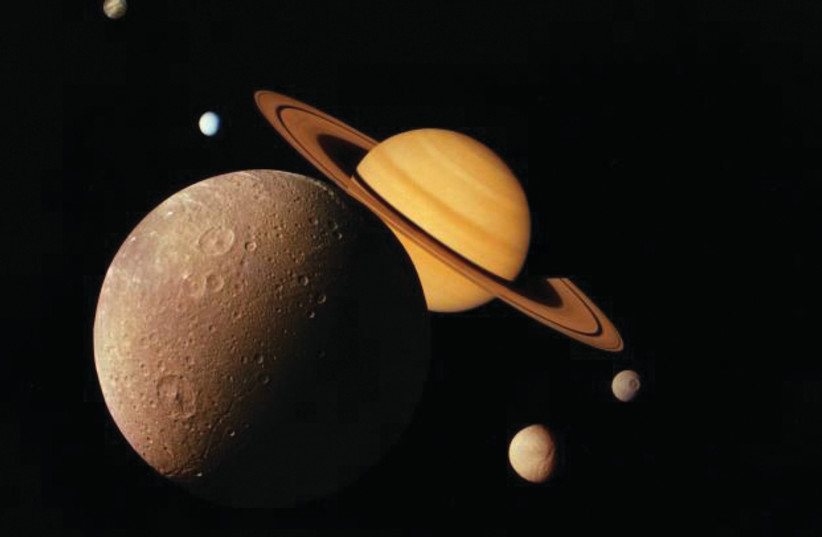Saturn’s rings heat up the surrounding atmosphere – study

The researchers discovered this by looking at the excess ultraviolet radiation, which is seen as a line of hydrogen in Saturn’s atmosphere.
Saturn’s ring system heats the upper atmosphere of the planet, a new study has found.
The researchers discovered this by looking at the excess ultraviolet radiation, which is seen as a line of hydrogen in Saturn’s atmosphere. The elevated radiation led scientists to understand that something was contaminating and heating the upper atmosphere externally.
The researchers used measurements taken from Hubble’s Space Telescope Imaging Spectrograph (STIS) and published their peer-reviewed study in The Planetary Science Journal.
Hubble’s measurements of Saturn were used to calibrate the archival UV data from all four other space missions that have observed Saturn. The researchers then compared the distribution of light from the missions and instruments.
"When everything was calibrated, we saw clearly that the spectra are consistent across all the missions. This was possible because we have the same reference point, from Hubble, on the rate of transfer of energy from the atmosphere as measured over decades," said Ben-Jaffel of the Institute of Astrophysics in Paris and the Lunar & Planetary Laboratory, University of Arizona, author of the paper. "It was really a surprise for me. I just plotted the different light distribution data together, and then I realized, wow—it's the same."
One possible explanation for the heat is that the icy ring particles that rain down onto the planet’s atmosphere cause the heating.
“This could be due to the impact of micrometeorites, solar wind particle bombardment, solar ultraviolet radiation, or electromagnetic forces picking up electrically charged dust,“ according to Phys org.
NASA’s Cassini probe confirmed in 2017 that particles are falling from the ring.
"Everything is driven by ring particles cascading into the atmosphere at specific latitudes. They modify the upper atmosphere, changing the composition," said Ben-Jaffel. "And then you also have collisional processes with atmospheric gasses that are probably heating the atmosphere at a specific altitude."
Significance of the discovery
The discovery opens new potential ways to predict if planets around other stars have the same Saturn-like rings.
"Though the slow disintegration of the rings is well known, its influence on the atomic hydrogen of the planet is a surprise. From the Cassini probe, we already knew about the rings' influence. However, we knew nothing about the atomic hydrogen content," said Lotfi Ben-Jaffel.
"We are just at the beginning of this ring characterization effect on the upper atmosphere of a planet. We eventually want to have a global approach that would yield a real signature about the atmospheres on distant worlds. One of the goals of this study is to see how we can apply it to planets orbiting other stars. Call it the search for 'exo-rings.'"
The data from the last four decades covering multiple solar cycles can help astronomers study the sun's seasonal effects on Saturn. By combining the data and calibrating it, Ben-Jaffel found that there is no difference in the level of UV radiation.
"At any time, at any position on the planet, we can follow the UV level of radiation," he said. This points to the steady "ice rain" from Saturn's rings as the best explanation.
Jerusalem Post Store
`; document.getElementById("linkPremium").innerHTML = cont; var divWithLink = document.getElementById("premium-link"); if (divWithLink !== null && divWithLink !== 'undefined') { divWithLink.style.border = "solid 1px #cb0f3e"; divWithLink.style.textAlign = "center"; divWithLink.style.marginBottom = "15px"; divWithLink.style.marginTop = "15px"; divWithLink.style.width = "100%"; divWithLink.style.backgroundColor = "#122952"; divWithLink.style.color = "#ffffff"; divWithLink.style.lineHeight = "1.5"; } } (function (v, i) { });

